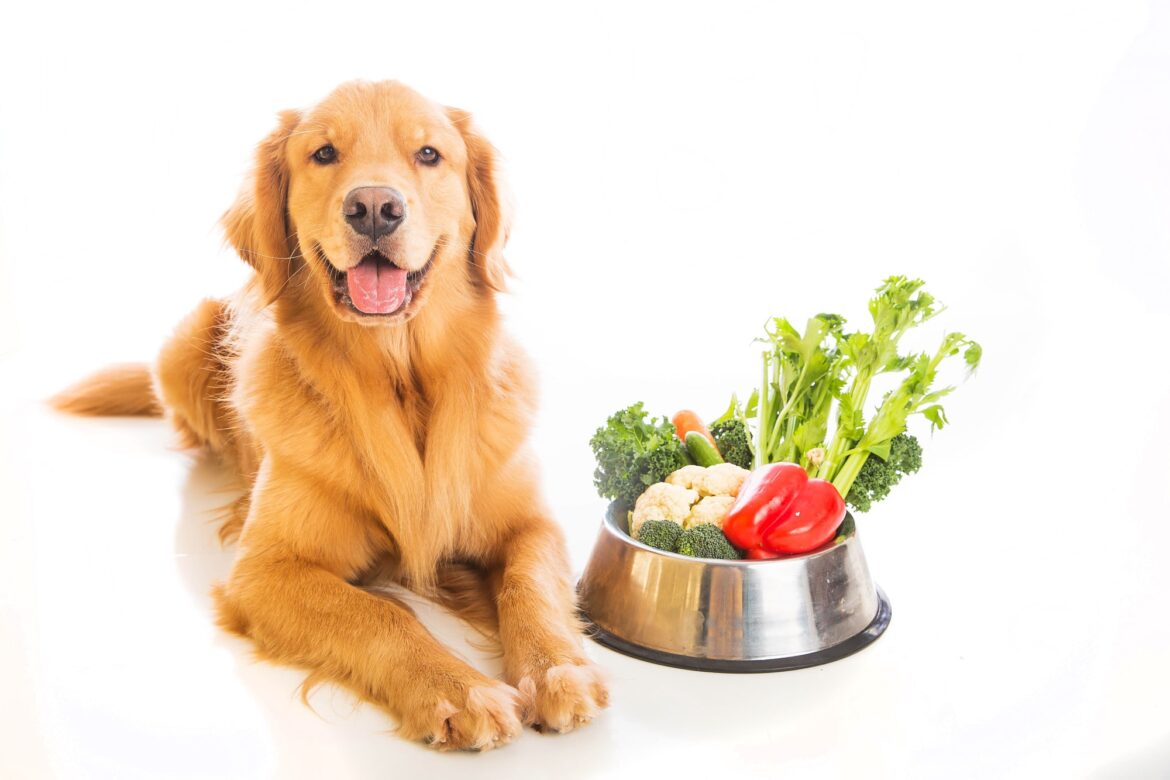On a global scale, pet owners spend approximately $125 billion per year on pet care. Nearly 73 percent of that money (equal to roughly $91.1 billion) is spent on pet food.
Are you spending more than you’d like (or can afford) on food for your dog? Are you looking for a way to cut costs without sacrificing food quality for your furry friend?
If so, you may want to consider making your own dog food at home.
There are lots of benefits that come with DIY-ing your dog’s food. Read on to learn more about these benefits and to get some easy recipes you can try today.
Why Make Your Own Dog Food?
One of the main reasons why people elect to make their own dog food is that it can help them save money. If you’re working with a strict budget and can’t afford to buy your dog high-quality food off the shelf, making your own allows you to ensure they continue to get the nutrients they need.
There are plenty of other benefits besides saving money, that some of you may not have even thought of before including the following:
Lack of Industry Regulation
There are very few regulations over the pet food industry in the United States. Because of this, pet food companies are able to get away with selling all kinds of cheap, low-quality food while passing it off as healthy.
If you’re concerned about the type of food your dog’s eating and aren’t sure which pet food brands you can trust, you might want to take matters into your own hands and start preparing their food yourself.
Control and Customization
When you prepare your dog’s food yourself, you have a lot more control over what they eat. It’s also easier for you to customize their food to ensure their diet is appropriate for their specific needs.
For example, you can prepare recipes that are higher in a particular macro or micronutrient. You can also make sure your dog is consuming more or fewer calories, depending on their weight management needs by including leaner meats and more vegetables.
The top reason dog owners look to make dog food at home isn’t the price. It’s to avoid major allergies their dog has. Most notably you can choose proteins that you know agree with your dog. Contrary to popular belief it’s not uncommon for dogs to have food allergies. For example, chicken allergies are a big one and are more prevalent than they used to be.
Increased Nutrient Consumption
Preparing your own food at home instead of eating out all the time tends to yield a better, more balanced macronutrient and micronutrient profile. The same is true of dogs.
If you want to feel confident that your dog is getting all the vitamins and minerals they need to thrive and feel their best, making their food at home is the best bet.
Many dog foods are fortified with vitamins and minerals, but that’s not the same as getting those nutrients from whole food sources.
Avoid Additives
In addition to controlling what your dog does eat, you also get to control what they don’t eat when you make their food yourself.
If you want your dog to avoid exposure to harmful food additives, artificial colors, and preservatives, making their food at home is a great option.
You can rest easy knowing that there’s nothing in their food that you wouldn’t want to eat yourself.
A Healthy Alternative
Dog food is literally marketed to appear healthy or make it sound like your neighborhood wild wolf eats it (we know which pet brand I’m talking about here) when in actuality it’s not healthy at all. Take a look at the front of the bag, then flip it over to read the ingredients. Dogs are omnivores but there are some ingredients that are simply filler and not great for your dog to ingest.
Conversely, if you have a cat at home, you might be more alarmed to read the back of the bag. Cats are obligate carnivores. They don’t need wheat, peas, or corn and for both species, we all know what happens when humans eat corn. Editor’s note: your cat’s diet varies greatly from your dog so please consult your veterinarian before replacing their diet with a homemade one.
Easy DIY Dog Food Recipes
Regardless of your reasoning for trying homemade food, you might be feeling a little lost when it comes to the actual preparation. Here are some easy recipes you can try to get started:
1. Beef Stew
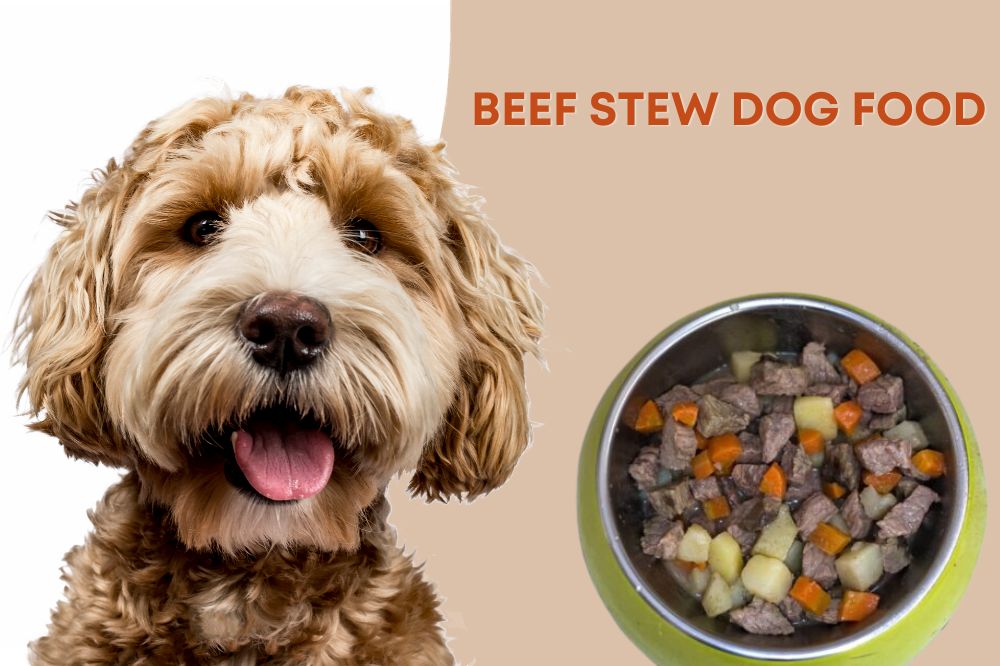
For this recipe, you’ll need the following ingredients:
- 1 pound of stew meat
- 1/2 cup of diced green beans
- 1/2 cup of diced carrots
- 1 small diced sweet potato
- 1/2 cup of water
- 1/2 cup of flour
- 1 tablespoon of vegetable oil
Cook the vegetables on the stovetop or in the microwave until they’re tender. Then, cook the beef in the vegetable oil until it’s well-done.
Remove the beef from the pan and heat the drippings while adding flour and water to create a gravy. When the gravy has thickened, add the beef and vegetables, stirring to combine everything.
This recipe makes approximately four cups of food.
2. Turkey, Rice, and Veggies
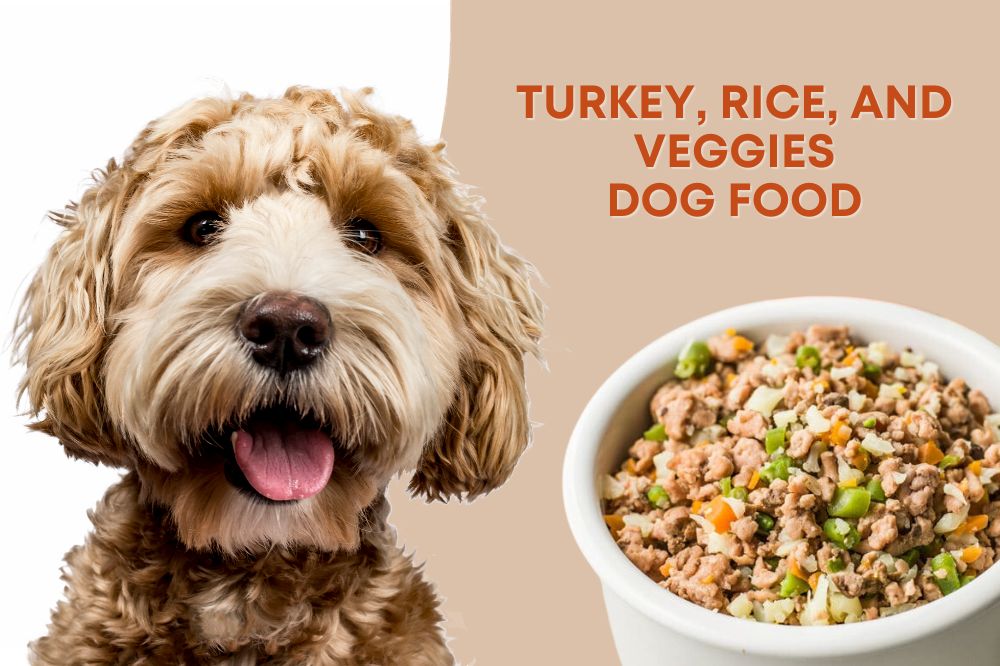
For this recipe, you’ll need the following ingredients:
- 6 cups of water
- 1 pound ground turkey
- 2 cups uncooked brown rice
- 16 ounces of frozen broccoli, cauliflower, and carrots
- 1 teaspoon of dried rosemary
Add the water, turkey, rice, and rosemary to a large Dutch oven and heat until the water is boiling.
Lower the temperature and allow the mixture to simmer for about 20 minutes. Then, add the vegetables and cook for another five minutes before removing from the heat and allow everything to cool.
This recipe makes approximately 12 cups of food.
3. Crockpot Beef and Rice
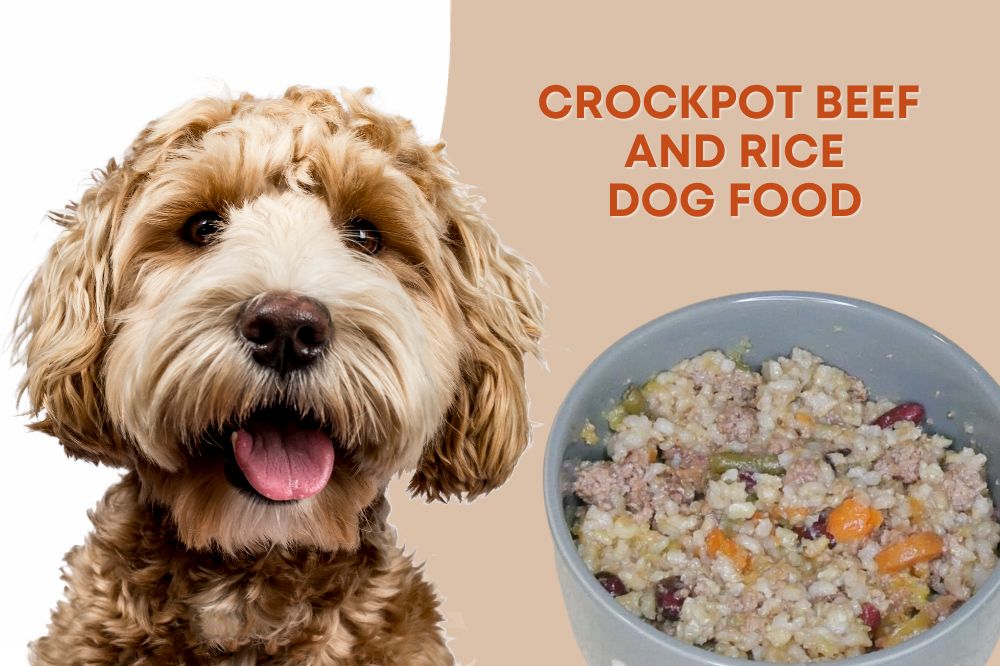
For this recipe, you’ll need the following ingredients:
- 2 1/2 pounds ground beef
- 1 1/2 cups uncooked brown rice
- 1 1/2 cups chopped butternut squash
- 1 can of drained and rinsed kidney beans
- 1/2 cup frozen peas
- 1 1/2 cups diced carrots
- 4 cups of water
Combine all ingredients in a Crockpot. Cover and cook on a low heat setting for 5-6 hours (or on a high heat setting for 2-3 hours). Stir as needed and let it cool to room temperature before serving.
This recipe makes approximately 12 cups of food.
Easy Dog Treat Recipes
Once you get the hang of making homemade dog food, you may want to branch out and start making your own dog treats, too. Here are a few easy treat recipes that will have your dog begging for more:
1. Peanut Butter Treats
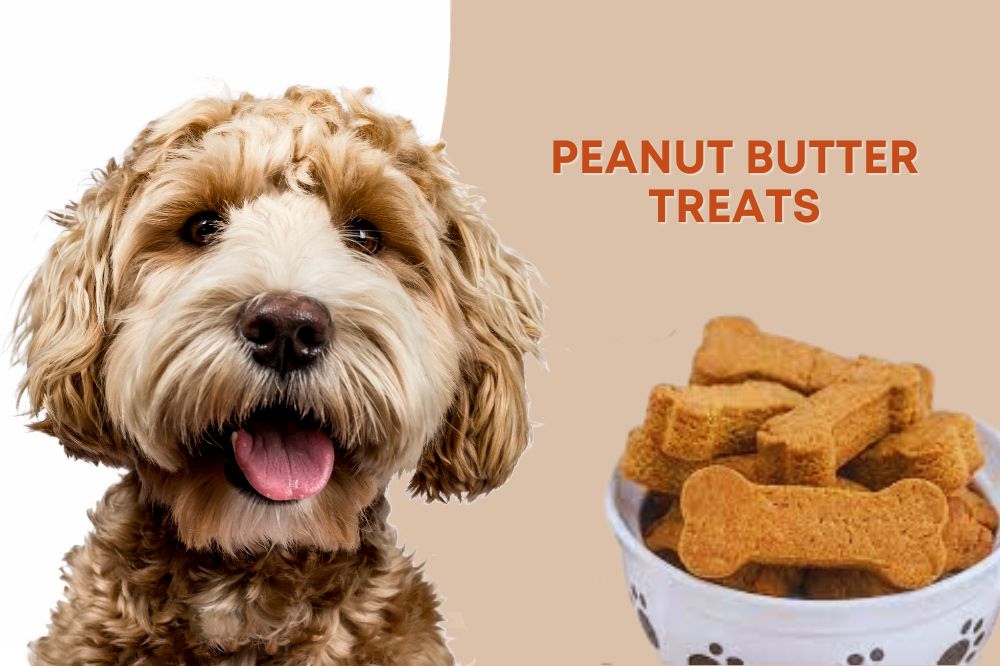
To make these treats, combine two cups of flour with two eggs and 1/2 cup of peanut butter that is xylitol-free.
Add water to the mixture until a wet dough forms. Roll it out and cut the dough into shapes using cookie cutters.
Bake the treats in the oven for 15 minutes at 350 degrees Fahrenheit.
2. Chicken Treats
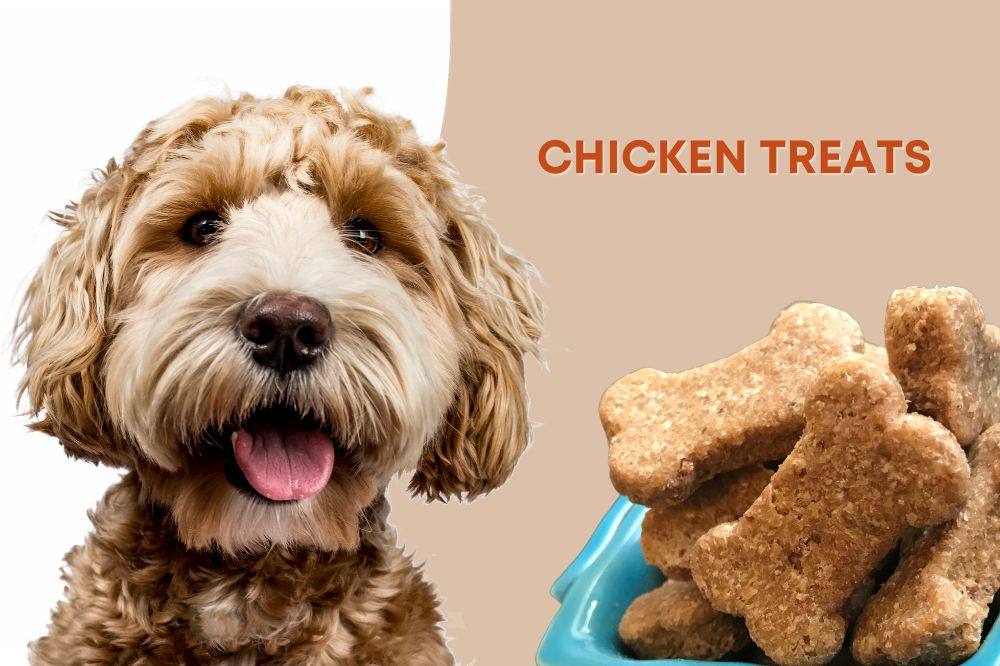
For these treats, combine one cup of diced chicken with half a cup of cooked rice, and two or three tablespoons of rice flour. Then, add one tablespoon of parsley and one egg.
Spoon the mixture into silicone molds, then bake in the oven for 20-30 minutes at 350 degrees Fahrenheit.
3. Sweet Potato Fries
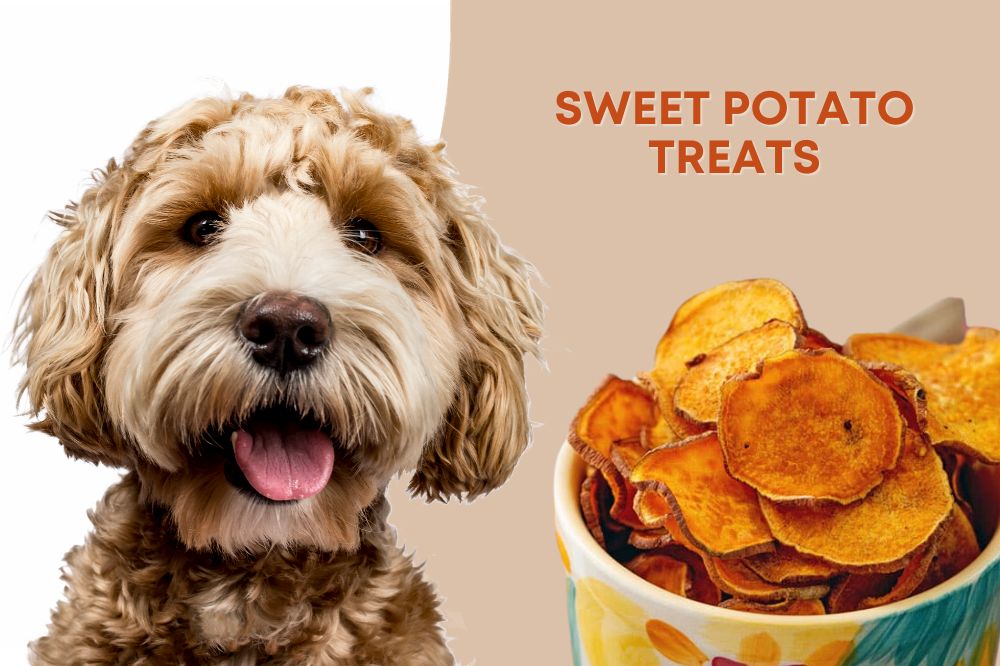
Dogs love sweet potato fries, too. To make these, coat sliced sweet potatoes in melted coconut oil and season with cinnamon and turmeric.
Bake in the oven for 30 minutes at 425 degrees Fahrenheit (toss them halfway through so they cook evenly).
Bonus Tips for Making Your Own Dog Food
Making your own dog food or dog treats might feel a bit overwhelming at first. You might also be worried about ensuring your dog is getting the right amount of nutrients from each meal.
Here are some tips that will help you make sure your dog’s meals are balanced and appropriate for their nutritional needs:
Consider Their Stage of Life
Be sure to take your dog’s stage of life into account. A puppy will need more food than an adult or senior dog, for example.
Puppies also need DHA in their food. It’s an omega-3 fatty acid that is super important for their neural development. Some natural sources to get their DHA in are coldwater fish like salmon, mackerel, trout, and herring.
Senior dogs also have specific dietary needs as well. Glucosamine, chondroitin, and omega-3 fatty acids are helpful as they age to keep their joints healthy. Some natural sources for it are found in chicken’s feet, ox tails, and beef trachea. You could also give your senior dog a bone broth but without the added seasoning you’d make it for yourself. Plain without seasoning including salt is the safest.
You do want to talk to your dog’s veterinarian about the specific amount of food and dietary needs they have to get all their essential macronutrients and micronutrients before switching their diet.
Manage Their Micronutrients
Adding vegetables to your dog’s homemade food will help you ensure they’re consuming adequate amounts of micronutrients. You do want to incorporate organ meats like liver and kidneys into their food as well.
Organ meats are loaded with micronutrients that you simply cannot get from muscle meats. They add some extra flavor to your dog’s food, too.
Avoid Potential Toxins
Make sure you aren’t accidentally using ingredients that are toxic to dogs. Some common ingredients you need to avoid include the following:
- Garlic
- Onions
- Raisins
- Macadamia nuts
- Grapes
- Avocado
- Cherries
- Mushrooms
- Rhubarb
- Xylitol (it’s used as a low-calorie sugar replacement)
- Chocolate
- Coffee (anything with caffeine in it)
Many people don’t realize that a lot of foods that are safe for humans have the potential to harm their dogs. Keep this list in mind to avoid an emergency trip to the vet’s office.
Monitor Them Closely
It’s important to monitor your dog closely when you make any kind of change to their diet. This is especially important when you’re making their food yourself, though.
Keep an eye on their appetite and their behavior for a few weeks after making the switch.
Do they seem to enjoy the new food? Are they energetic?
Does their coat seem healthy and shiny? Is their stool healthy and fully formed (they’re not constipated or dealing with diarrhea)?
All of these are indicators that the new food is working well for them.
If you’re worried or your dog is displaying something that is a concern, consult their veterinarian immediately.
Give Them an Extra Health Boost
You may want to consider adding some extra supplements to your dog’s food as well. For example, you might want to add some CBD oil for dogs and cats to help with joint pain or promote relaxation in anxious dogs.
Many people want to give their pets CBD oil but have a hard time tricking them into taking it. Mixing it into their food is a great way to add it in and mask the flavor so they can enjoy all the health benefits.
Start Making Your Own Dog Food Today
Are you interested in making your own dog food?
As you can see, it’s not as difficult as you might have thought at first, and it’s a great way to save money while also ensuring your dog is eating nutrient-dense food at every meal.
Keep these recipes in mind to start whipping up some special meals for your pooch today.
Have you ever tried making your own dog food before? Which of these recipes are you most excited to test out?
Leave us a comment below and let us know!

